English Medium
Academic Year: 2024-2025
Date & Time: 20th February 2025, 10:30 am
Duration: 3h
Advertisements
General Instructions:
Read the following instructions very carefully and strictly follow them:
- This question paper comprises 39 questions. All questions are compulsory.
- This question paper is divided into five sections - A, B, C, D and E.
- Section A - Questions No. 1 to 20 are Multiple Choice Questions. Each question carries 1 mark.
- Section B - Questions No. 21 to 26 are Very Short Answer type questions. Each question carries 2 marks. Answer to these questions should be in the range of 30 to 50 words.
- Section C - Questions No. 27 to 33 are Short Answer type questions. Each question carries 3 marks. Answer to these questions should be in the range of 50 to 80 words.
- Section D - Questions No. 34 to 36 are Long Answer type questions. Each question carries 5 marks. Answer to these questions should be in the range of 80 to 120 words.
- Section E - Questions No. 37 to 39 are of 3 source-based/case-based units of assessment carrying 4 marks each with sub-parts.
- There is no overall choice. However, an internal choice has been provided in some sections. Only one of the alternatives has to be attempted in such questions.
Examples of thermal decomposition reactions are:
- \[\ce{2AgCl->2Ag + Cl2}\]
- \[\ce{CaCO3->CaO + CO2}\]
- \[\ce{2H2O->2H2 + O2}\]
- \[\ce{2KClO3->2KCl + 3O2}\]
(i) and (ii)
(ii) and (iii)
(iii) and (iv)
(ii) and (iv)
Chapter:
You have three aqueous solutions A, B and C as given below:
- Potassium nitrate
- Ammonium chloride
- Sodium carbonate
The ascending order of the pH of these solutions is:
A < B < C
B < C < A
C < A < B
B < A < C
Chapter:
Which one of the following metals is protected from corrosion by a layer of its own oxide?
Aluminium
Copper
Silver
Gold
Chapter:
The colour of the solution observed after about 1 hour of placing iron nails in copper sulphate solution is ______.
Blue
Pale green
Yellow
Reddish brown
Chapter:
A hydrocarbon which does not belong to the same homologous series of carbon compounds is ______.
C4H10
C6H14
C7H14
C10H22
Chapter:
The water of crystallization is present in ______.
- Bleaching Powder
- Plaster of Paris
- Washing Soda
- Baking Soda
(ii) and (iv)
(ii) and (iii)
(i) and (iii)
(i) and (iv)
Chapter:
Juice of tamarind turns blue litmus to red. It is because of the presence of an acid called ______.
methanoic acid
acetic acid
tartaric acid
oxalic acid
Chapter:
Electrical impulse travels in a neuron from:
Nerve ending → Axon → Cell body → Dendrite
Dendrite → Cell body → Axon → Nerve ending
Cell body → Dendrite → Axon → Nerve ending
Dendrite → Axon → Nerve ending → Cell body
Chapter:
A tall pea plant with round seeds (TTRR) is crossed with a short pea plant with wrinkled seeds (ttrr). The F1 generation will be ______.
25% tall with round seeds
50% tall with wrinkled seeds
75% tall with wrinkled seeds
100% tall with round seeds
Chapter:
The basic filtration unit of the excretory system in human beings is ______.
Nephron
Urethra
Neuron
Urinary bladder
Chapter:
Which one of the following is not an excretory product in plants?
CO2
Starch
Resins and gums
Dead cells
Chapter:
In human alimentary canal, the digestive juice secreted by the gastric glands are ______.
Bile, Trypsin, Pepsin
Hydrochloric acid, Pepsin, Mucus
Lipase, Bile, Mucus
Salivary amylase, Pepsin, Bile
Chapter:
The curvature of eye lens of human eye ______.
is fixed.
can be increased.
can be decreased.
increases or decreases as the case may be.
Chapter:
Identify from the following the ray diagram which shows the correct path of the reflected ray for the ray incident on a concave mirror, as shown:
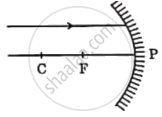
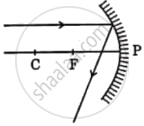
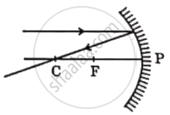
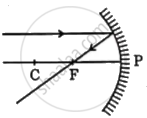
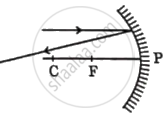
Chapter:
In the following groups of wastes, which group contains only non-biodegradable wastes?
Leather footwear, Plastic plate, Polythene bag
Empty medicine bottle, Milk packet, Aluminium can
Used tea leaves, Cardboard box, Iron nail
Plastic Syringes, Newspaper, Ball point pen
Chapter:
Consider the following food chain:
Grass → Grasshopper → Frog → Snake → Eagle
If the amount of energy available at third trophic level is 50 kJ, the available energy at the producer level was:
0.5 kJ
5 kJ
500 kJ
5000 kJ
Chapter:
Assertion (A): Xylem tissue moves water and minerals obtained from the soil by the roots.
Reason (R): Xylem tissue is found only in the roots of a plant.
Both Assertion (A) and Reason (R) are true and Reason (R) is the correct explanation of the Assertion (A).
Both Assertion (A) and Reason (R) are true and Reason (R) is not the correct explanation of the Assertion (A).
Assertion (A) is true, but Reason (R) is false.
Assertion (A) is false, but Reason (R) is true.
Chapter:
Assertion (A): Carbon and its compounds are our major sources of fuels.
Reason (R): Most of the carbon compounds on burning release a large amount of heat and light.
Both Assertion (A) and Reason (R) are true and Reason (R) is the correct explanation of the Assertion (A).
Both Assertion (A) and Reason (R) are true and Reason (R) is not the correct explanation of the Assertion (A).
Assertion (A) is true, but Reason (R) is false.
Assertion (A) is false, but Reason (R) is true.
Chapter:
Assertion (A): Food web is a network of several food chains operating in an ecosystem.
Reason (R): Food web decreases the stability of an ecosystem.
Both Assertion (A) and Reason (R) are true and Reason (R) is the correct explanation of the Assertion (A).
Both Assertion (A) and Reason (R) are true and Reason (R) is not the correct explanation of the Assertion (А).
Assertion (A) is true, but Reason (R) is false.
Assertion (A) is false, but Reason (R) is true.
Chapter:
Assertion (A): In the common domestic circuits the earth wire is connected to a metallic plate buried deep inside the earth.
Reason (R): Earth wire ensures that any leakage of current to the metallic body of the appliance keeps its potential to that of the earth, so the user may not get a severe electric shock.
Both Assertion (A) and Reason (R) are true and Reason (R) is the correct explanation of the Assertion (A).
Both Assertion (A) and Reson (R) are true and Reason (R) is not the correct explanation of the Assertion (A).
Assertion (A) is true, but Reason (R) is false.
Assertion (4) is false, but Reason (R) is true.
Chapter:
Name a metal found in the earth’s crust in free state and state where each of these metals is placed in the reactivity series of metals.
Chapter:
Name a metal found in the earth’s crust in the form of its compound state, where each of these metals is placed in the reactivity series of metals.
Chapter:
Study the figure in which the path of a ray of light going from Medium 1 to Medium 2 is shown.
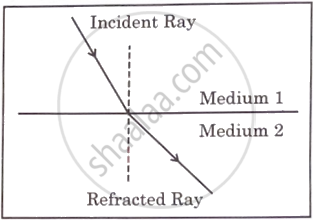
- Out of the two Media - Medium 1 and Medium 2, in which is the speed of light more?
- State reason of bending of the refracted ray away from the normal.
- Express refractive index of Medium 2 with respect to Medium 1 in terms of speed of light in two media.
Chapter:
Give reasons:
The sky appears dark to passengers flying at very high altitude.
Chapter:
Give a scientific reason:
Danger signals are red in colour.
Chapter:
What is a rainbow?
Chapter: [0.1] The Human Eye and the Colourful World
Why do we see a rainbow in the sky only after rainfall?
Chapter: [0.1] The Human Eye and the Colourful World
“Proteins control the expression of various characters.” Explain this statement by taking the example of “tallness” as a characteristic in plants.
Chapter:
Explain the mechanism of inheritance used by sexually reproducing organisms to ensure the stability of DNA of the species.
Chapter:
Advertisements
A doctor finds in one of his patients that he is not maintaining a proper posture and balance of his body. State the region of brain and also the part of brain which is responsible for it.
Chapter:
Write the percentage of the energy of sunlight captured by green plants to convert it into food energy. Explain the fate of this energy when green plants are eaten by primary consumers.
Chapter:
Why is respiration considered an exothermic reaction? Explain.
Chapter: [0.01] Chemical Reactions and Equations
State the chemical property in which the following uses of baking soda are based upon as an anti-acid.
Chapter:
State the chemical property in which the following uses of baking soda are based upon as a constituent in making baking powder.
Chapter:
State the chemical property in which the following uses of baking soda are based upon in soda-acid fire-extinguishers.
Chapter:
Write chemical equations to show what happens when an acid reacts with a metal; also write the name of the main product formed.
Chapter:
Write chemical equations to show what happens when an acid reacts with a base; also write the name of the main product formed.
Chapter:
Write chemical equations to show what happens when an acid reacts with a carbonate; also write the name of the main product formed.
Chapter:
A student placed a candle flame at different distances from a convex lens and focused its image on a screen. He recorded his observation in tabular form as given below:
| S. No. | Distance of flame from the lens (cm) |
Distance of the image from the lens |
| 1 | − 90 | +18 |
| 2 | −60 | +20 |
| 3 | −40 | +24 |
| 4 | −30 | +30 |
| 5 | −24 | +40 |
| 6 | −20 | +60 |
| 7 | −18 | +90 |
| 8 | −12 | +120 |
Analyse the observation table and on the basis of your analysis only, answer the following questions (without doing any calculations):
- What is the focal length of the convex lens used? Give reason to justify your answer.
- Which one of the sets of observations is not correct and why?
- Draw ray diagram to show image formation for any correct set of observation.
Chapter:
“In human beings, the genes inherited from the parents decide whether the newborn individual is male or female.”
Explain this statement with the help of a flow diagram.
Chapter:
“Some animals rely on environmental cues for sex determination.” Justify this statement giving an example.
Chapter:
Name the blood vessel that brings oxygenated blood to the human heart.
Chapter:
Name the blood vessel that brings deoxygenated blood to the human heart.
Chapter:
Name the chamber of the heart which receives deoxygenated blood and state how deoxygenated blood from this chamber is sent to the lungs for oxygenation.
Chapter:
A person uses lenses of power −0.5 D in his spectacles for the correction of his vision.
- Name the defect of vision the person is suffering from.
- List two causes of this defect.
- Determine the focal length of the lenses used in the spectacles.
Chapter:
Explain the statement ‘the potential difference between two points is 1 volt’.
Chapter: [0.11] Electricity
What does the symbol given below represent in an electric circuit? Write one function.

Chapter:
What does the symbol given below represent in an electric circuit? Write one function.

Chapter:
Chapter: [0.12] Magnetic Effects of Electric Current
How is the direction of magnetic field at a point determined?
Chapter:
Draw the pattern of magnetic field lines of the magnetic field produced by a current carrying circular loop. Mark on it the direction of (i) current and (ii) magnetic field lines.
Chapter:
Name the two factors on which the magnitude of the magnetic field due to a current carrying coil depends.
Chapter:
Advertisements
Why can't two magnetic field lines cross each other?
Chapter:
Draw magnetic field lines showing the direction of the magnetic field due to a current carrying long straight solenoid. State the conclusion which can be drawn from the pattern of magnetic field lines inside the solenoid.
Chapter:
Name any two factors on which the magnitude of the magnetic field due to this solenoid depends.
Chapter:
Mention the common method of reproduction in Amoeba.
Chapter: [0.07] How do Organisms Reproduce?
Write a major difference in the way Amoeba and Leishmania divide to produce new individuals.
Chapter:
What is meant by asexual reproduction?
Chapter: [0.07] How do Organisms Reproduce?
Explain the process of budding in Hydra.
Chapter: [0.07] How do Organisms Reproduce?
Give two methods used to grow rose plants by vegetative propagation.
Chapter:
Give two methods used to grow jasmine plants by vegetative propagation.
Chapter:
Write one function of the petals of a bisexual flower.
Chapter:
Write one function of the anther of a bisexual flower.
Chapter:
Write one function of the style of a bisexual flower.
Chapter:
Write one function of the ovary of a bisexual flower.
Chapter:
Give one example of a unisexual flower.
Chapter: [0.07] How do Organisms Reproduce?
Mention the changes a flower undergoes after fertilisation.
Chapter: [0.07] How do Organisms Reproduce?
Name an alcohol and a carboxylic acid having two carbon atoms in their structures. Draw their structures and state how this alcohol can be converted into a carboxylic acid. What happens when these two compounds react in the presence of an acid? Write chemical quations for the reactions involved in the two cases mentioned above.
Chapter:
What are soaps?
Chapter: [0.04] Carbon and its Compounds
Why are soaps not considered suitable for washing clothes in a region where water is hard? How is this problem overcome?
Chapter:
| Many pure metals like copper, iron and gold are very soft and as such are considered unsuitable for certain uses. Metallic objects around us such as cooking utensils, statues, ornaments, guns, etc., are actually not made up of pure metals. Instead of pure metals, alloys are used in the design of most of the useful objects. Making alloys enhances the basic properties of a metal which is the primary constituent (metal) of an alloy. |
- How does electrical conductivity and melting point of a metal change when it is converted to its alloy by mixing a small amount of an element in it? (1)
- Name an alloy used for welding two wires together in an electric circuit. Write its major constituents. (1)
-
- What are alloys? How is ‘Brass’ (an alloy) prepared? (2)
OR - What is stainless steel? How is it prepared? Write one important property which makes it more useful in making cooking utensils as compared to its primary metal. (2)
- What are alloys? How is ‘Brass’ (an alloy) prepared? (2)
Chapter:
|
The growth movements of plant parts in which the direction of the stimulus determines the direction of the response are known as tropic movements or tropism. Plants also have non-directional movements, which may not be growth-dependent.
|
- Name the movement which causes ‘X’ and ‘Y’ to grow downwards and upwards respectively. (1)
- Write the name of a hormone that plays a major role in
- falling of leaves.
- rapid cell division. (1)
-
- Leaves of the sensitive plant move very quickly in response to ‘touch’. How is this stimulus of touch communicated and explain how the movement takes place? (2)
OR - Name the plant hormone which is synthesized at the shoot tip. How does this hormone help the plant to bend towards light? (2)
- Leaves of the sensitive plant move very quickly in response to ‘touch’. How is this stimulus of touch communicated and explain how the movement takes place? (2)
Chapter:
Study the circuit shown in which two resistors X and Y of resistances 3 Ω and 6 Ω respectively are joined in series with a battery of 2 V.

- Draw a circuit diagram showing the above two resistors X and Y joined in parallel with the same battery and the same ammeter and voltmeter. (1)
- In which combination of resistors will the (i) potential difference across X and Y and (ii) current through X and Y, be the same? (1)
-
- Find the current drawn from the battery by the series combination of the two resistors (X and Y). (2)
OR - Determine the equivalent resistance of the parallel combination of the two resistors (X and Y). (2)
- Find the current drawn from the battery by the series combination of the two resistors (X and Y). (2)
Chapter:
Other Solutions
Submit Question Paper
Help us maintain new question papers on Shaalaa.com, so we can continue to help studentsonly jpg, png and pdf files
CBSE previous year question papers Class 10 Science with solutions 2024 - 2025
Previous year Question paper for CBSE Class 10 Science-2025 is solved by experts. Solved question papers gives you the chance to check yourself after your mock test.
By referring the question paper Solutions for Science, you can scale your preparation level and work on your weak areas. It will also help the candidates in developing the time-management skills. Practice makes perfect, and there is no better way to practice than to attempt previous year question paper solutions of CBSE Class 10.
How CBSE Class 10 Question Paper solutions Help Students ?
• Question paper solutions for Science will helps students to prepare for exam.
• Question paper with answer will boost students confidence in exam time and also give you an idea About the important questions and topics to be prepared for the board exam.
• For finding solution of question papers no need to refer so multiple sources like textbook or guides.

